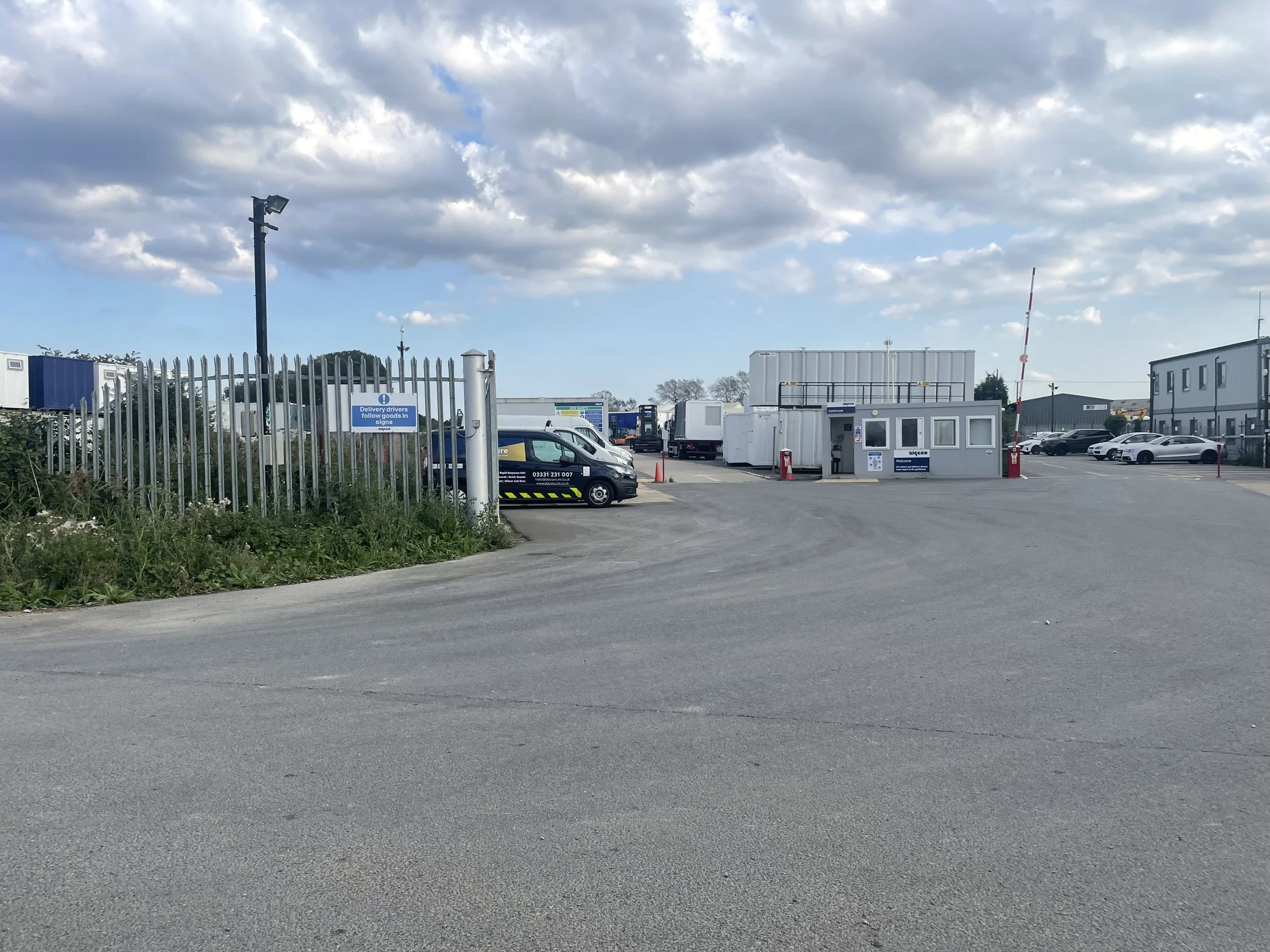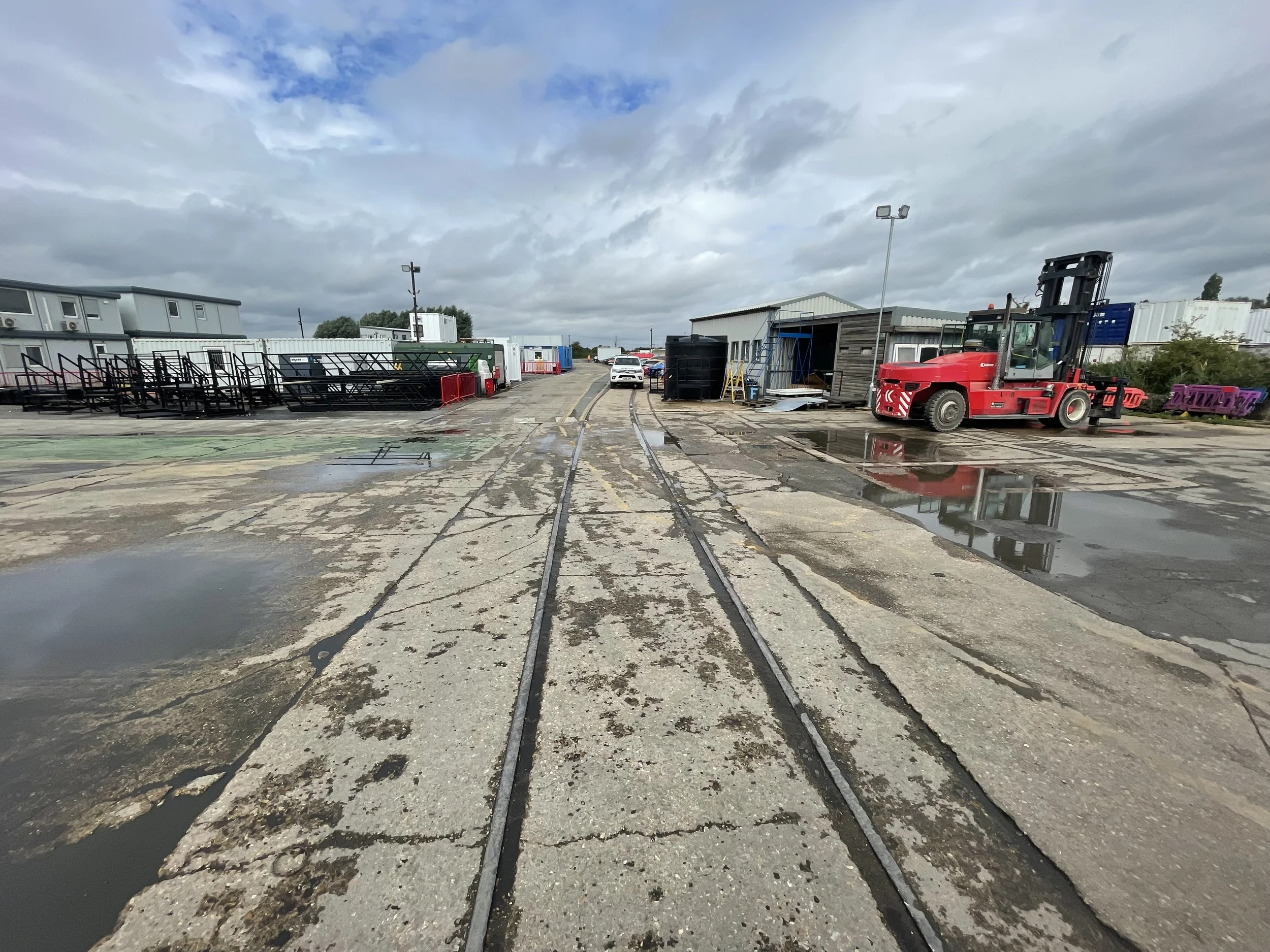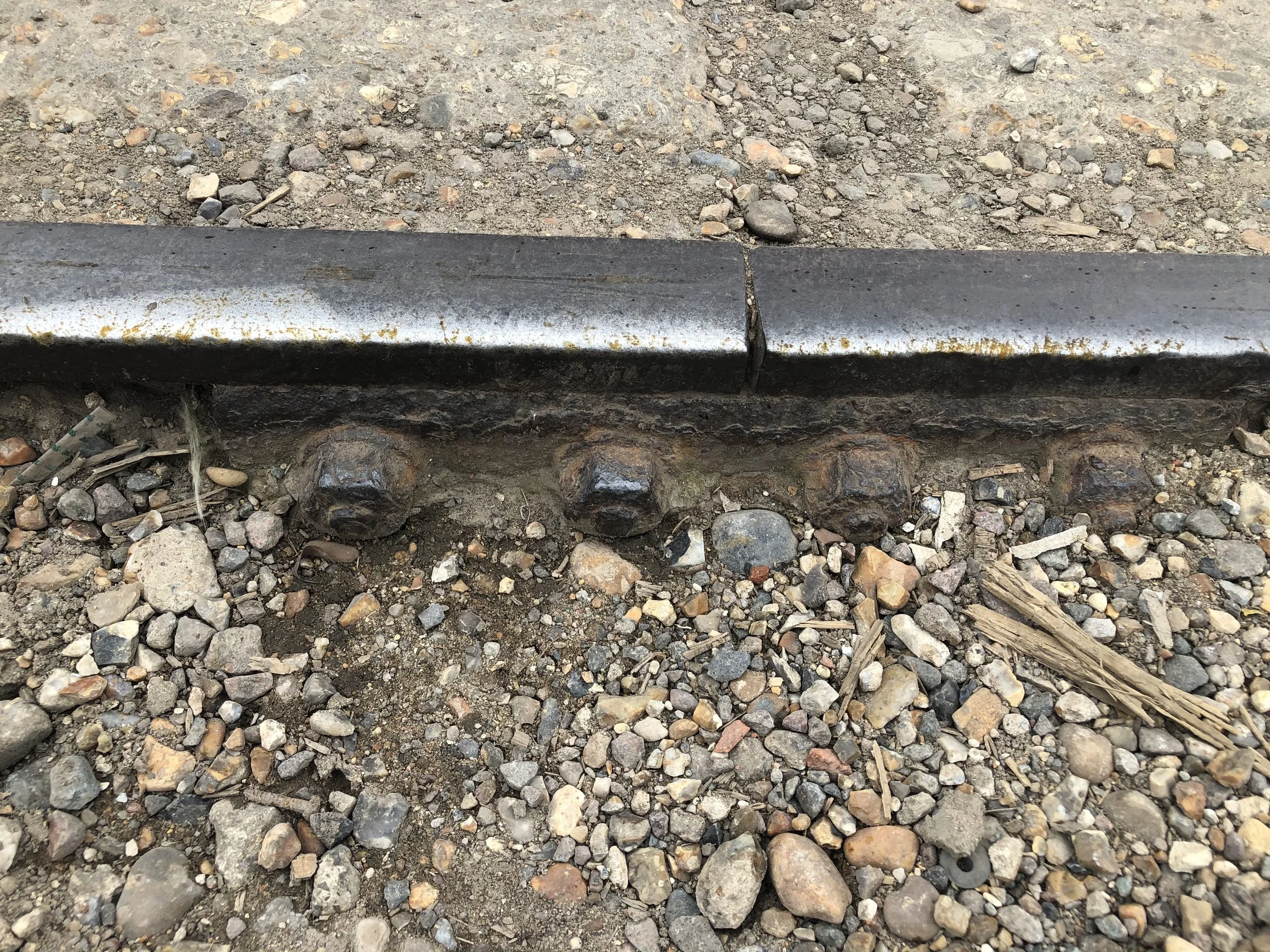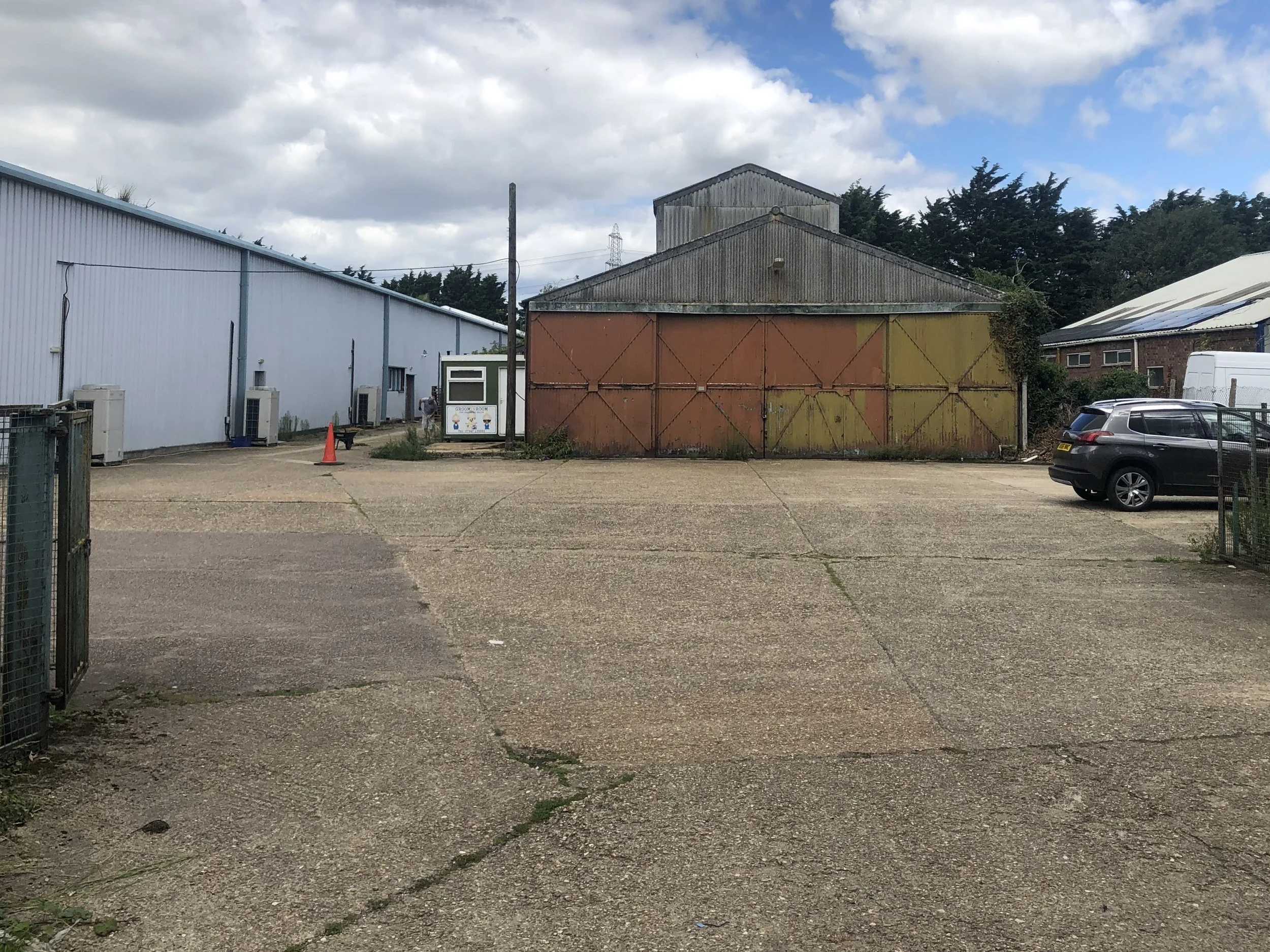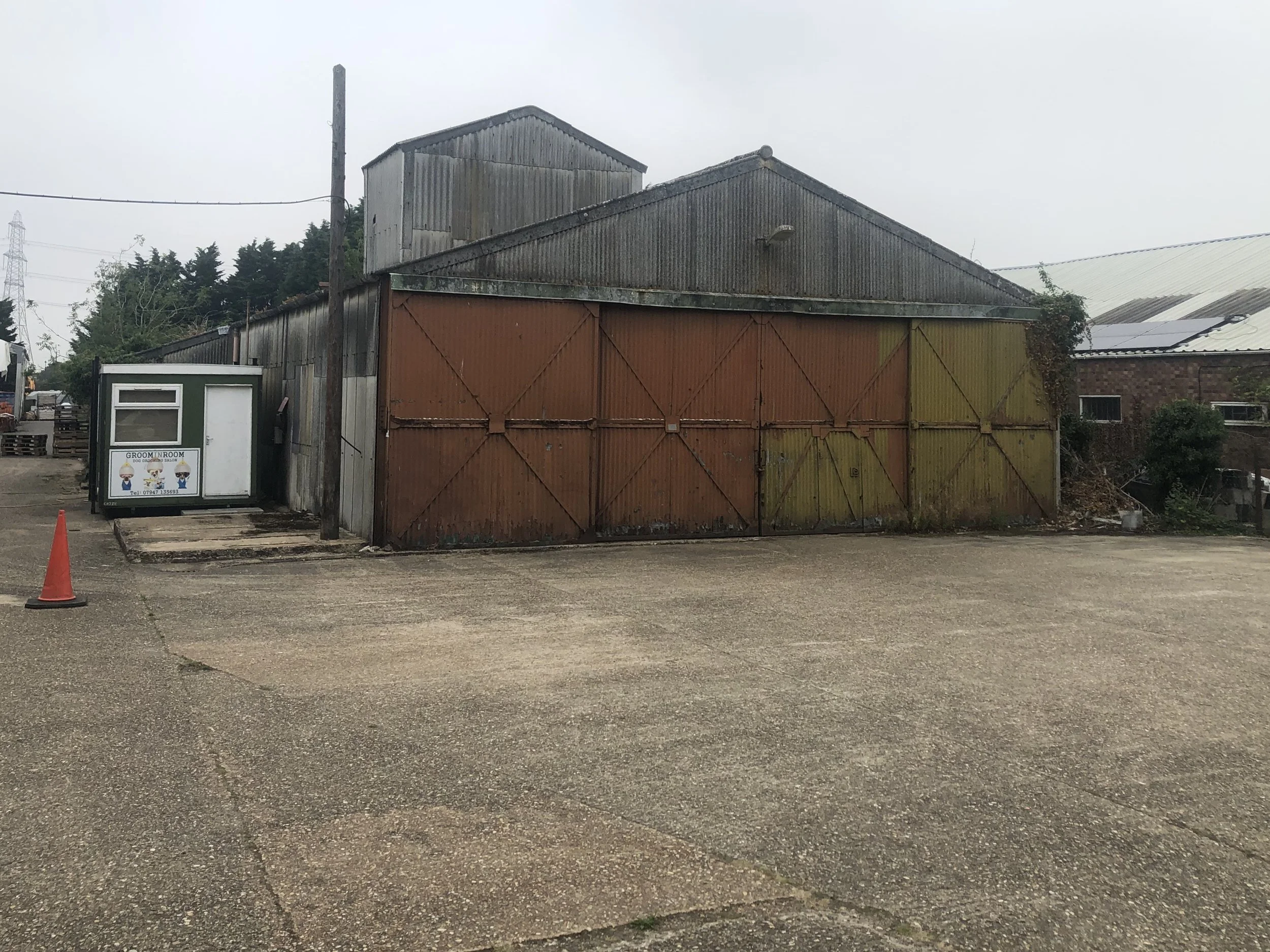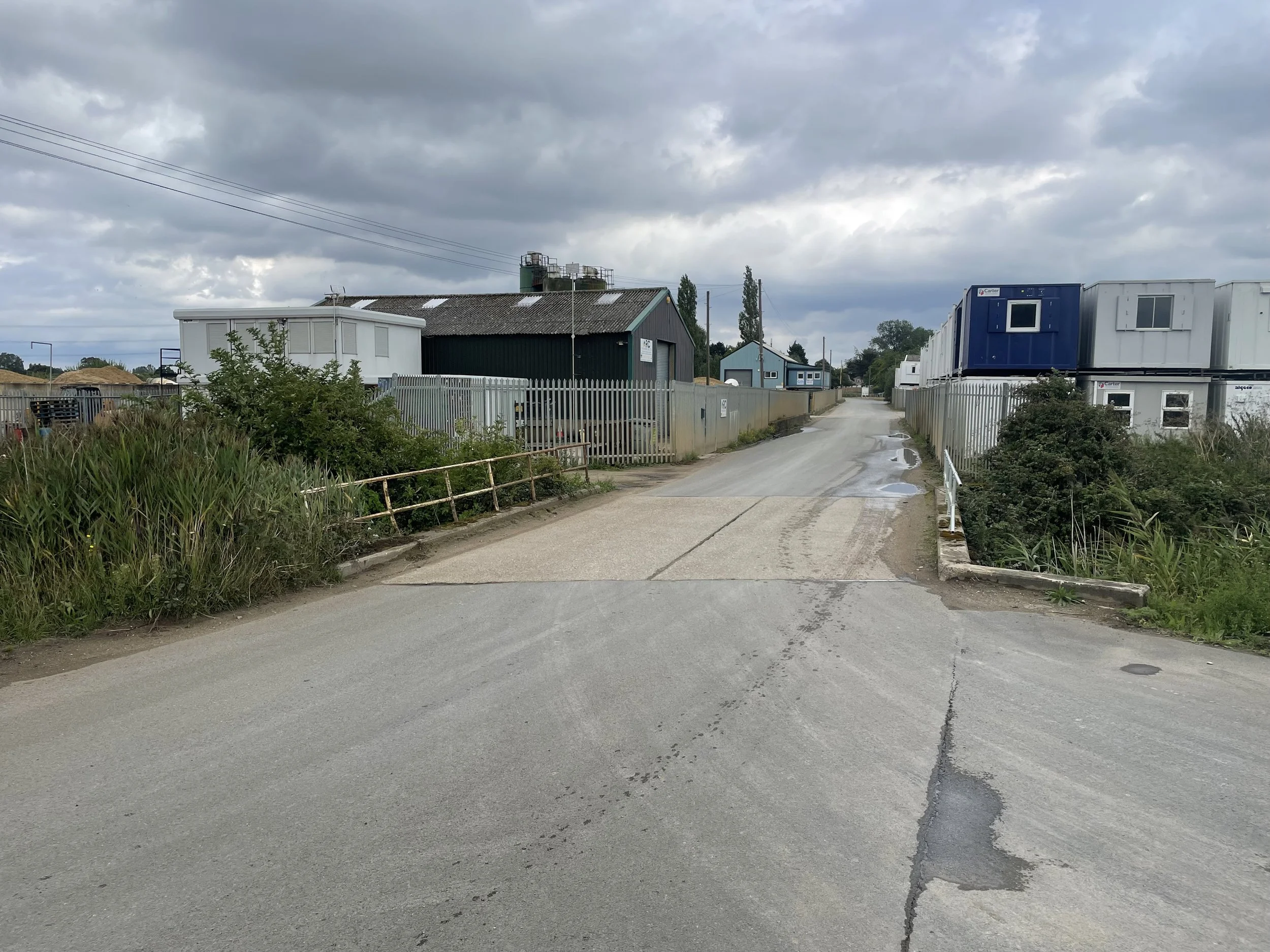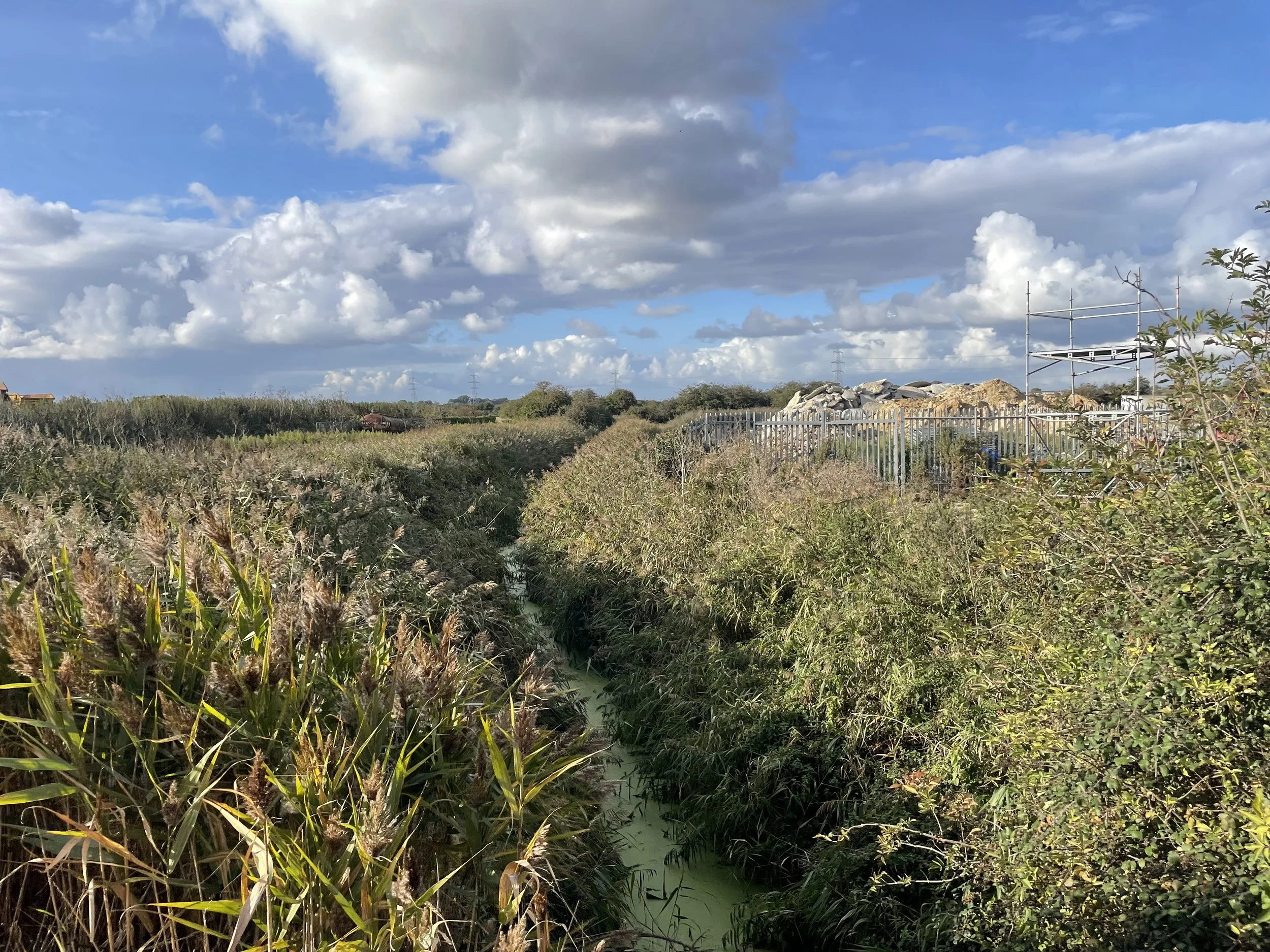Setchey Oil fields Railway.
Clarke’s Drove Sidings

Welcome to Norfolk's disused railway's page for the Short-lived Setchey oil fields railway.
The English Oil Fields company was established in 1918.
In 1920, construction of the Setchey Oil fields commenced with the Clarke’s Drove siding railway connecting the site to the King’s Lynn to London railway via the Cambridge and Ely line.
This railway line had already been constructed in 1919.
Initially, plans were made to connect the site to the M&GNJR and a pipeline to King’s Lynn Docks, but these plans never materialised.
The Oil fields never achieved commercial success and ceased operations in 1926 due to low levels of sulfur, leaving the entire project unfinished.
It is said that for every 20 tonnes of shale extracted, approximately 3 gallons of oil were produced.
The English oil company remained on the site and eventually closed it down in 1966.
Today, the land is used as the Garage Lane industrial estate, with only a few buildings remaining, including the old engine sheds and some structures adjacent to them.
Underneath the engine sheds, full-gauge railway tracks were discovered beneath the concrete floor, and it is believed that these tracks still exist.
If you have any photos of the site, please share them, and I will give you full credit.
In Carter Cabin’s yard, now Alegco’s yard, by the entrance, you could also see some Standard Gauge railway tracks. Additionally, there are other railway track remains in the yard.
These tracks have since been covered over by new tarmac near the entrance, while the track in the yard remains.
The car sales site on the A10 by the Garage Lane estate was the location of the main offices.
The site of Beers of Europe was the main centre of the works.
The route of the old railway line remains unblocked and follows the side of the industrial site, passing by a waste management yard.
The small drain remains, with a concrete bridge over it, but all the pits have been filled in.
My Google Maps Coverage.
Setchey Oil Fields Historic Maps.
©THE NATIONAL LIBRARY OF SCOTLAND
Setchey Oil Fields Historic Photos.
Setchey Oil Fields, thanks to ©King's Lynn Forums.
©KING’S LYNN FORUMS.
Setchey Oil Fields Modern Photos
At the entrance to Algeco, formerly Carter Cabin hire, lie some of the old railway tracks from the historic railway.
Photographed in June 2020
In September 2023, I sadly observed that the tracks by the gates on the now industrial estate have been covered with tarmac.
Inside the industrial estate yard, I discovered remnants of the railway, including old parts of the railway track that had been left behind.
At the entrance to Algeco formerly carter cab in hire once laid some of the old railway tracks from the historic railway
Photographed in june 2020
In September 2023, I sadly observed that the tracks by the gates on the now industrial estate have been covered with tarmac.
In side the industrial estate yard I found these old remnants of the railway some old parts of railway track left behind.
Setchey Oil Fields, Buildings
At the entrance to the Setchey industrial estate, some Buildings remain from the Oil fields some alterations may have happened to them over time.
The old engine shed by the entrance to the industrial estate in Setchey. This building is said to have some small track parts left behind and possibly a small turntable and this building looks to have had some alterations over time.
The next building here appears to have been completely rebuilt but still retains the same architectural character as its original counterpart.
The final building is an old relic that seems to have been left in its original condition.
This old fuel station, now a car sales site, was said to have been the main office and site entrance of the old oil fields. Nothing remains of the old industrial oil works here.
The site next to the three old disused buildings left behind from the industrial fields now sits commercial units this was used as part of the main yard during the industrial days.
The Puny drain & bridge
The new road that carries road traffic over the Puny drain where the oil was first discovered.
The Puny drain.









